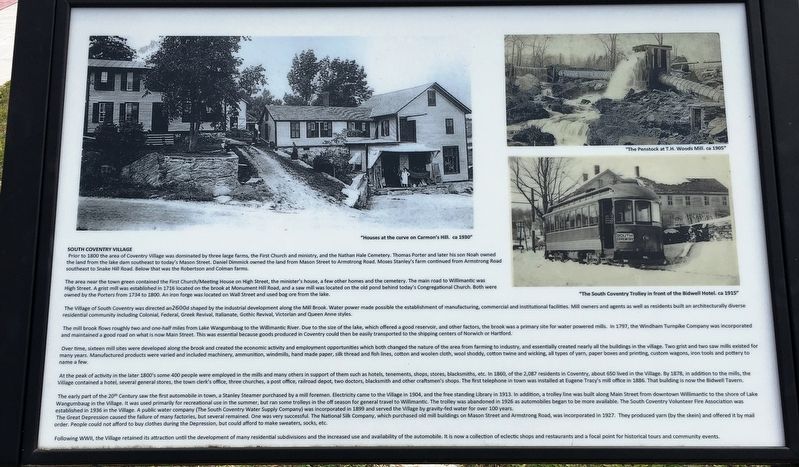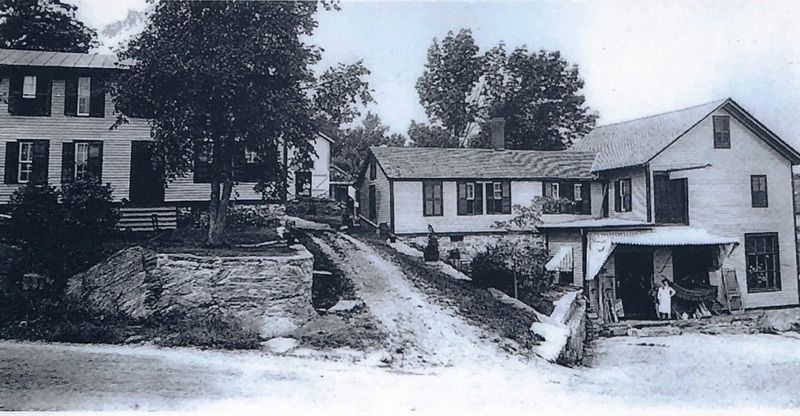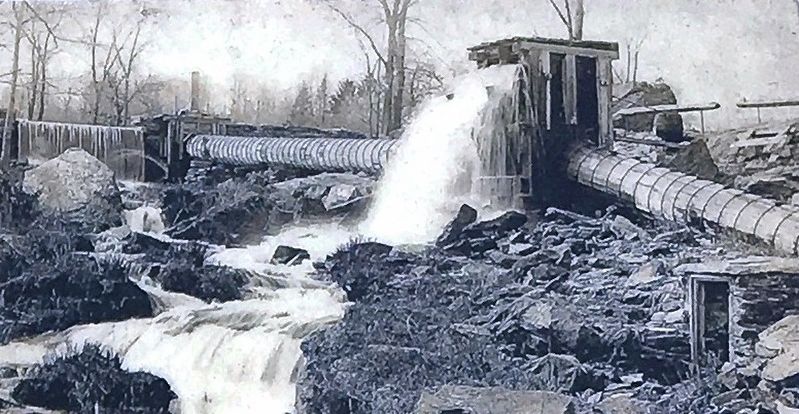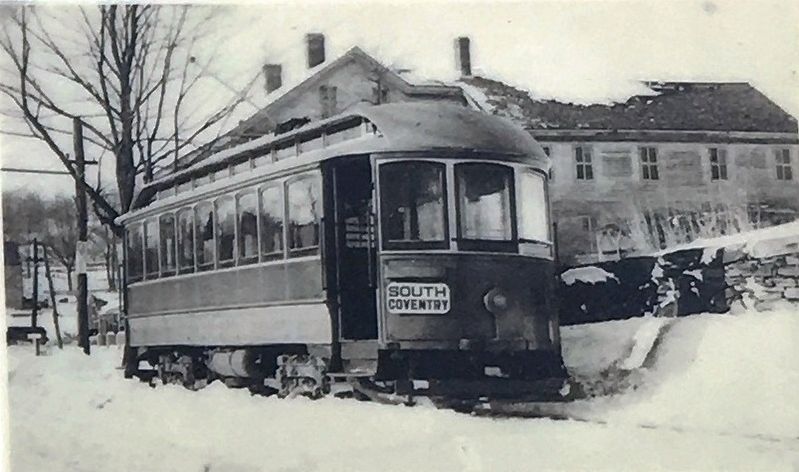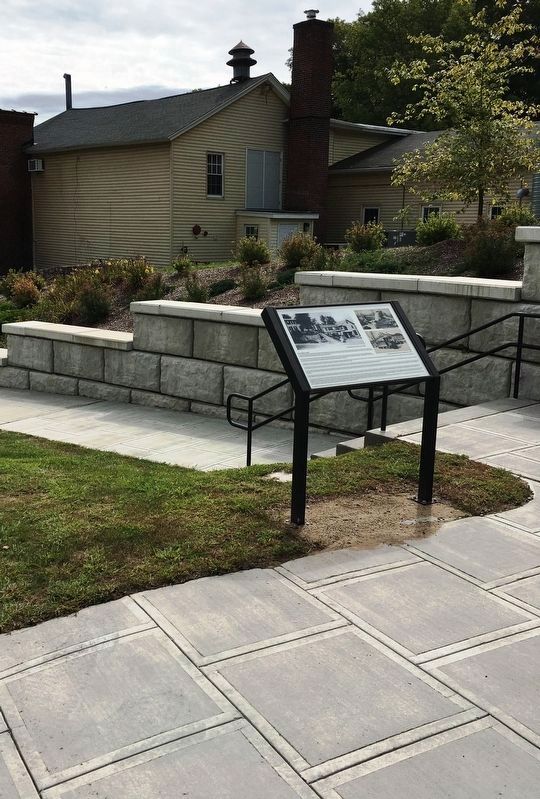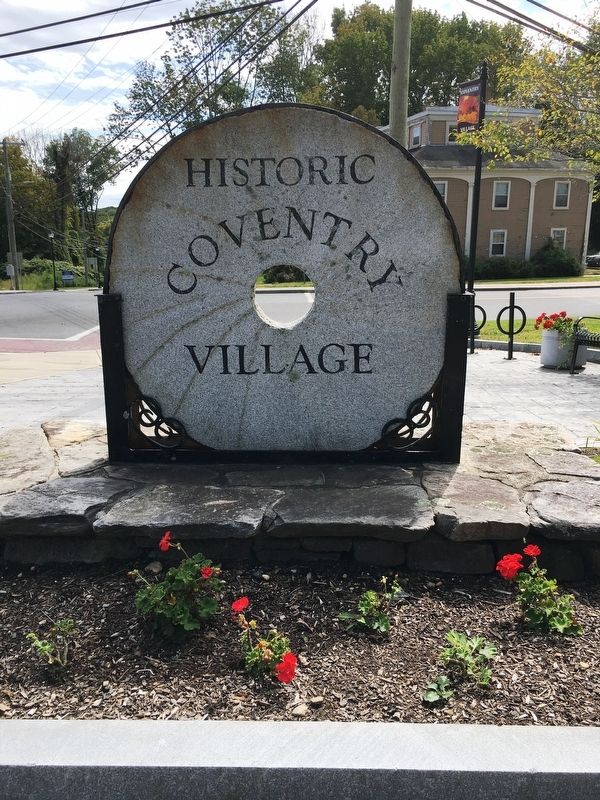South Coventry in Tolland County, Connecticut — The American Northeast (New England)
South Coventry Village
Prior to 1800 the area of Coventry Village was dominated by three large farms, the First Church and ministry, and the Nathan Hale Cemetery. Thomas Porter and later his son Noah, owned the land from the lake dam southeast to today’s Mason Street. Daniel Dimmick owned the land from Mason Street to Armstrong Road. Moses Stanley’s farm continued from Armstrong Road southeast to Snake Hill Road. Below that was the Robertson and Coleman farms.
This area near the town green contained the First Church/Meeting House on High Street, the minister’s house, a few other homes and the cemetery. The main road to Willimantic was High Street. A grist mill was established in 1716 located on the brook at Monument Hill Road, and a saw mill was located on the old pond behind today’s Congregational Church. Both were owned by the Porters from 1734 to 1800. An iron forge was located on Wall Street and used bog ore from the lake.
The Village of South Coventry was directed and shaped by the industrial development along the Mill Brook. Water power made possible the establishment of manufacturing, commercial and institutional facilities. Mill owners and agents as well as residents built an architecturally diverse residential community including Colonial, Federal, Greek Revival, Italianate, Gothic Revival, Victorian and Queen Anne styles.
The mill brook flows roughly two and one-half miles from Lake Wangumbaug to the Willimantic River. Due to the size of the lake, which offered a good reservoir, and other factors, the brook was a primary site for water powered mills. In 1797, the Windham Turnpike Company was incorporated and maintained a good road on what is now Main Street. This was essential because goods produced in Coventry could then be easily transported to the shipping centers of Norwich and Hartford.
Over time, sixteen mill sites were developed along the brook and created the economic activity and employment opportunities which both changed the nature of the area from farming to industry, and essentially created nearly all the buildings in the Village. Two grist and two saw mills existed for many years. Manufactured products were varied and included machinery, ammunition, windmills, hand made paper, silk thread and fish lines, cotton and woolen cloth, wool shoddy, cotton twine and wicking, all types of yarn, paper boxes and printing, custom wagons, iron tools and pottery to name a few.
At the peck of activity in the later 1800’s some 400 people were employed in the mills and many others in support of them such as hotels, tenements, shops, stores, blacksmiths, etc. In 1860, of the 2,087 residents in Coventry, about 650 lived in the Village. By 1878, in addition to the mills,
the Village contained a hotel, several general stores, the town clerk’s office, three churches, a post office, railroad depot, two doctors, blacksmith and other craftsmen’s shops. The first telephone in town was installed at Eugene Tracy’s mill office in 1886. That building is now the Birdwell Tavern.
The early part of the 20th Century saw the first automobile in town, a Stanley Steamer purchased by a mill foreman. Electricity came to the Village in 1904, and the free standing Library in 1913. In addition a trolley line was built along Main Street from downtown Willimantic to the shore of Lake Wangumbaug in the Village. It was used primarily for recreational use in the summer, but ran some trolleys in the off season for general travel to Willimantic. The trolley was abandoned in 1926, as automobiles began to be more available. The South Coventry Volunteer Fire Association was established in 1936 in the Village. A public Water Company (The South Coventry Water Supply Company) was incorporated 1899 and served the Village by gravity-fed water for over 100 years. The Great Depression caused the failure of many factories, but several remained. One was very successful. The National Silk Company, which purchased old mill buildings on Main Street and Armstrong Road, was incorporated in 1927. They produced yarn (by the skein) and offered it by mail order. People could not afford
to by clothes during the Depression, but could afford to make sweaters, socks, etc.
Following WWII, the Village retained its attraction until the development of many residential subdivisions and the increased use and availability of the automobile. It is now a collection of eclectic shops and restaurants and a point of historical tours and community events.
Topics. This historical marker is listed in these topic lists: Industry & Commerce • Railroads & Streetcars.
Location. 41° 46.135′ N, 72° 18.238′ W. Marker is in Coventry, Connecticut, in Tolland County. It is in South Coventry. Marker is on Main St, 0.1 miles east of Monument Hill Rd, on the right when traveling east. Touch for map. Marker is in this post office area: Coventry CT 06238, United States of America. Touch for directions.
Other nearby markers. At least 8 other markers are within walking distance of this marker. Warfield Pond (within shouting distance of this marker); Thomas H. Wood’s Silk Mill (within shouting distance of this marker); E.A. Tracy Wool Extract and Shoddy Mill (about 400 feet away, measured in a direct line); The Tracy Shoddy Mill (about 400 feet away); The Bidwell House (about 500 feet away); John Boynton’s Mill (about 500 feet away); Lakeside Park (about 500 feet away); Veterans 1861-1865 (about 700 feet away). Touch for a list and map of all markers in Coventry.
Credits. This page was last revised on February 10, 2023. It was originally submitted on November 9, 2019, by Brandon D Cross of Flagler Beach, Florida. This page has been viewed 166 times since then and 13 times this year. Photos: 1, 2, 3, 4, 5, 6. submitted on November 9, 2019, by Brandon D Cross of Flagler Beach, Florida. • Michael Herrick was the editor who published this page.
